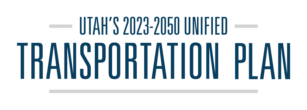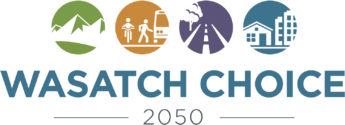Planning our Transportation Future
In the face of tremendous growth and as the transportation industry evolves rapidly, we must think differently about how we plan for and deliver Utah’s transportation system while educating the public about the challenges and opportunities associated with our transportation future.
More Holistic Planning
Improving mobility and accessibility by coordinating transportation and land use and opportunities
Where we place jobs, housing, recreation and educational facilities relative to transportation options makes a big difference in the type and cost of trips people make. In addition, people are more likely to walk, bike or to take a short trip to get to work or school when they live in a centered location. Further, including recreation opportunities in a central location near housing, jobs and schools encourages better health and reduces burden on the transportation system.
One example of this type of planning is the Wasatch Choice 2050. Wasatch Choice is a shared vision for transportation investments, development patterns, and economic opportunities along the Wasatch Front. The Vision map and key strategies show how advancing the Vision can enhance quality of life even as we grow. Wasatch Choice envisions transportation investments and inter-related land and economic development decisions that achieve desired local and regional outcomes.
A Balanced Approach
When planning for the future, we must look at a balanced approach that encompasses an expanded system capacity, enhanced operations and demand management.
- Capacity – To provide choices for our growing population we must continue to plan for expanded system capacity, which means expanding roads, transit and active transportation facilities
- Operations – We can get more out of the transportation system through enhanced operations, leveraging the use of innovative technologies such as integrated signal timing, freeway ramp metering, real-time transit information and system communications
- Demand Management – Utahns can become a part of the solution through demand management as we encourage individuals to travel differently and use all of our transportation capacity across modes

